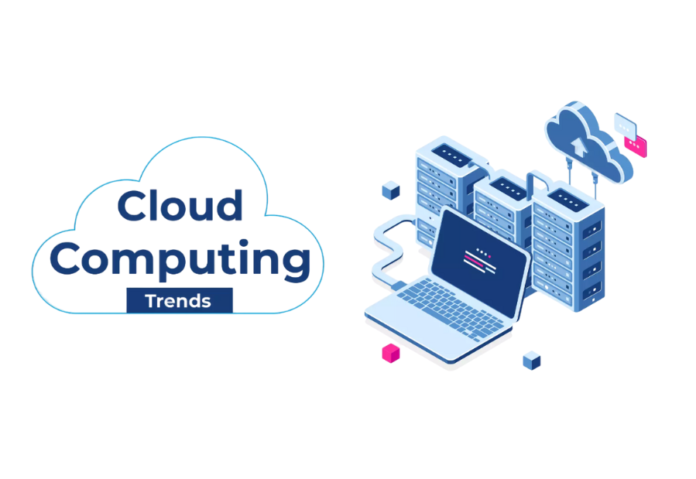The cloud is without a doubt the most developed technology trend now in use. The enterprise cloud computing market will see tremendous changes in the upcoming years, which will impact how businesses function, make use of cutting-edge technology stacks, and contend in the digital era. Ten themes that you should be aware of as you follow the development of enterprise cloud solutions are as follows:
Hyperconnected cloud ecosystems: The enterprise cloud ecosystem is becoming more and more like a hyperconnected city of devices, apps, and services. Cloud platforms, IoT devices, and 5G networks will interact more by 2025, forming a seamless network of communication and cooperation. Take advantage of this trend to stimulate innovation, improve operational effectiveness, and provide customers and stakeholders in your ecosystem with better experiences.
AI-driven Automation: With artificial intelligence, you may find useful insights in your enterprise cloud systems, streamline workflows, and automate repetitive tasks. AI-driven automation will revolutionize business operations and enable previously unheard-of levels of productivity and efficiency by 2030, making it a vital tool. Invest in artificial intelligence (AI) technologies to improve productivity, cut expenses, and free up staff to work on strategic projects that spur innovation and growth.
Blockchain for trust and transparency: Examine how blockchain technology can revolutionize business interactions by establishing security, transparency, and trust. By 2025, you may improve data integrity, expedite supply chain management, and cultivate stakeholder confidence by incorporating blockchain into your cloud platforms. Accept blockchain’s role as an innovation accelerator that will allow for the development of new business models to resolve difficult issues and create new sources of income in the digital economy.
Edge computing redefines latency: Expect edge computing to revolutionize enterprise cloud systems by displacing processing power farther from the point of data production. Edge computing will completely rethink latency by 2030, making it possible for mission-critical apps, immersive experiences, and real-time analytics to occur at the edge. Adopt edge computing to transform your business processes and customer experiences by taking advantage of new opportunities in augmented reality, autonomous systems, and the Internet of Things.
Technical Cloud debt to Cloud-native development paradigm: Adoption of public clouds can, in fact, result in technical debt; thus, it’s important to know the subtleties. Providers of public clouds provide a wide range of services, from AI and machine learning to processing and storage. This oversupply may result in overly complex structures, which would make selecting the appropriate services difficult. Teams could use services without fully realizing the consequences, which could result in less-than-ideal designs and unintended technical debt. Furthermore, cloud service providers regularly adjust their pricing structures, APIs, and services. Although this innovation has advantages, it may cause problems for current structures. Technical debt can arise from updating to new services or migrating from out-of-date ones.
For instance, a major amount of rework could be necessary when switching from an outdated database service to a modern one. Finally, improper management of cloud costs might cause them to skyrocket. Technical debt is caused by overprovisioning, wasteful resource use, and unforeseen fees. When businesses overspend on services that should be optimized for their workloads, debt can be accumulated. Designing with robustness and scalability in mind is the solution to technical debt. utilizing cloud-native architectures that are built with fault tolerance, high availability, and auto-scaling in mind. To lower risk, multi-region deployments are another option. Although adopting the cloud can result in technological debt, its effects can be lessened with careful planning, ongoing oversight, and well-informed decision-making.
Incorporate the cloud-native development paradigm into your enterprise cloud systems to create scalable, robust, and agile apps. Adopt serverless computing, containerization, and microservices by 2025 to manage costs, boost innovation, and adjust to shifting market conditions. Adopt cloud-native concepts to boost productivity, adaptability, and market competitiveness.
Cybersecurity beyond perimeter defense: Embrace a zero-trust security model in your company’s cloud platforms to improve your cybersecurity posture beyond standard perimeter defense. Invest in identity management, encryption, and sophisticated threat detection technologies by 2030 to protect sensitive data and maintain customer confidence. Setting cybersecurity as a top priority is a strategic must to reduce risks because it guarantees the resilience of your digital infrastructure against changing threats.
Hybrid cloud environments prevail: Easily expand your on-premises infrastructure to the cloud, optimize workloads, and comply with regulations by navigating the intricacies of hybrid cloud settings. Use hybrid cloud architectures by 2025 to make your company’s cloud systems cost-effective, secure, and scalable at the same time. As you embark on your digital transformation journey, embrace hybrid cloud environments as a strategic enabler of creativity and agility.
DevSecOps culture: Develop an environment of cooperation and ongoing enhancement by implementing DevSecOps techniques in your corporate cloud infrastructure. By 2030, security ought to be included in all phases of the software development lifecycle, enabling efficient communication and coordination between operations teams, security experts, and developers. In order to cultivate a DevSecOps attitude and drive innovation and resilience inside your organization, embrace automation, cultural change efforts, and collaboration technologies.
Data governance and privacy regulations: To safeguard the security and confidentiality of sensitive data stored in your corporate cloud systems, navigate the constantly changing landscape of privacy laws, data governance, and compliance rules. To guarantee regulatory compliance and reduce risks, make investments by 2025 in strong data governance frameworks, encryption technology, and compliance management systems. Make data privacy and governance your top priorities as guiding principles to build trust and responsibility in your data-driven projects.
Green cloud initiatives: Accept green cloud activities to lessen your impact on the environment, achieve sustainability objectives, and help create a more environmentally friendly future. Reduce the environmental effect of your company’s cloud systems by 2030 by utilizing carbon-neutral cloud services, energy-efficient data center architecture, and renewable energy sources. Adopt sustainability as a guiding principle to inspire creativity and accountable care in the digital age.






